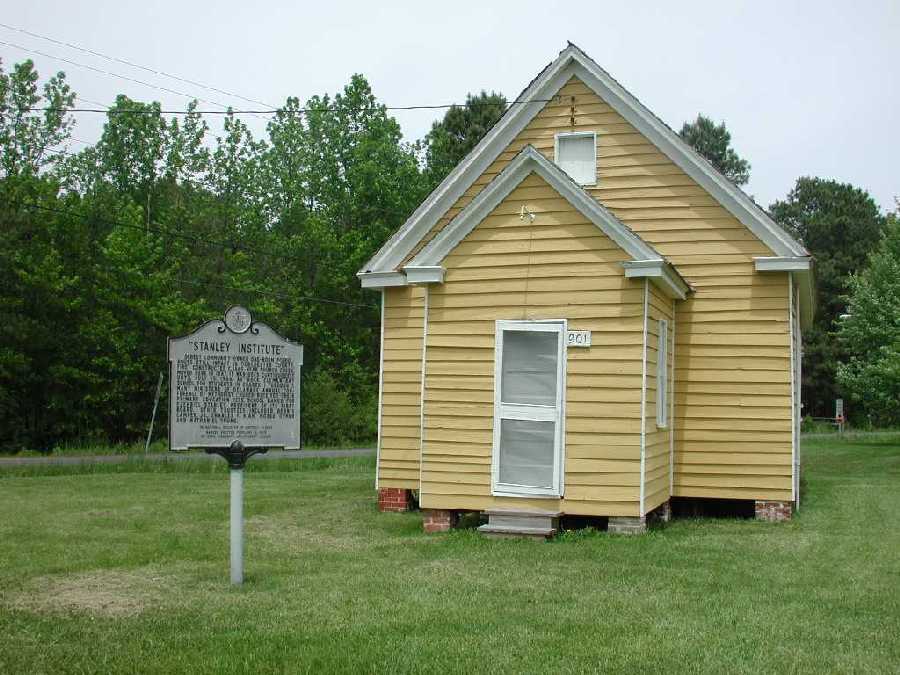
Photo credit:
Don Cook, 2002
|
Stanley Institute
Inventory No.:
D-43
Other Name(s):
Rock School
Date Listed:
9/11/1975
Location:
2439 Rock Drive, Cambridge, Dorchester County
Category:
Building
Period/Date of Construction:
c. 1865
|
|
Description:
Stanley Institute, known as the Rock School, is a rectangular one-story, gable-front frame building with a small one-bay, one-story entrance vestibule. The main structure is three bays long and one bay wide. The windows of the main block are 6/6 sash while those of the vestibule are 4/4. A door of four horizontal panels serves as the entrance. The gable roofs of both parts are wood shingled and have simple boxed cornices with returns. An open belfry once stood at the front end of the roof; a brick chimney stands at the opposite end of the roof ridge. The building rests on wood blocks, about 18" above ground level. Several of the piers have been replaced with brick in recent years. The interior has experienced minor alterations. The windows are framed with unornamented board surrounds. The ceiling is sheathed with narrow beaded boards and the walls are similarly wainscoted up to the height of the window sills. The plaster on the walls above the wainscoting has been replaced with plasterboard. The interior walls of the entrance vestibule are presently sheathed with horizontal boards which may or may not be original. None of the early furnishings remain but three original blackboards still occupy their proper locations and in the northwest corner there is a cater-cornered library case. A double privy and tool shed stand near the rear of the building.
|
Significance:
In 1867 the building known as Rock School was moved to its present location from a site near Church Creek. As most of the existing fabric appears to date from about the mid and late 19th century, it is believed that the building, when moved, was dismantled and its parts utilized in the construction of the existing building. If the building was moved intact, it was probably constructed just a few years prior to the move. If the latter is true, then its present appearance, both interior and exterior, may have resulted from renovations after the building was re-sited. The building served as both a church and a school until the erection of the present Rock Methodist Church later in the 19th century. Serving the black residents of the area, it was presided over by an elected Board of Trustees. The first President of the Board was Ezekrial Stanley and for many years the school was called the Stanley Institute in his honor. The Rock School is one of Maryland's oldest schools organized and maintained by a black community, and is significant for its role in the development of African American social history in Maryland.
|
|